It was an amazing display of patchwork that a group of ladies from ‘The Patchworkers and Quilters Guild of Victoria’, created for the first African Block Swap. Styles ranged from traditional, to contemporary, to artistic. The choice of fabrics reflected the colours of Australia, complimented block themes, or used Australian prints. A talented bunch of ladies.

The variety of the first block created by the group.
So what to do for my block this time? I am currently cataloguing all library books for my local Guild’s website (Essendon Quilters), and a side benefit is getting to have a quick peruse through the collection as part of the process. (Which is why I’ve been off the radar lately, and will be for a while as there’s 900 books to be done!) This book came along at just the right time.

‘Quilt-a-Koala: Australian Animals and Birds in Patchwork’ by Margaret Rolfe
Margaret Rolfe is one of the Australia’s esteemed quilters, with a long history of creating and preserving the traditions. What a wonderful way to showcase Australia for this block swap! But which animal to start with – the koala of course! Just need to raid the stash for fabric too.
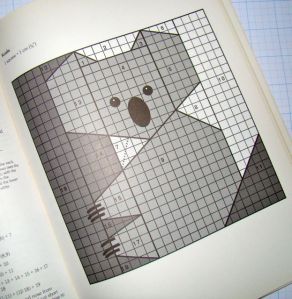
The pattern for the pieced koala.

Fabric selection
The pattern is for 19 pieces to make the block and is in metric measurement, whereas as patchworkers we work in imperial. Our whole country (Australia) works in metric and has done so since 1970, except for Patchwork Quilting – due to influences beyond our control, namely the industry in USA. We are continually having to switch between the two when reading patterns and purchasing fabric. DH who functions completely in metric, down to millimetres, gets frustrated when I talk in inches, so double sided tape measures come out to be used.
First up – draft the pattern up to a 12 inch block, cover it with freezer paper to make templates.

Drafted block, freezer paper pinned over the top of the graph paper.
Cut the freezer paper into individual shapes, iron to right side of fabric, cut out the patches and start sewing – sounds easy. There’s lot’s of fiddly bits, and techniques have changed since the book was first published in 1990. Hang on a minute, as Pauline (Patchworks Unlimited) keeps teaching us, there must be an easier way!
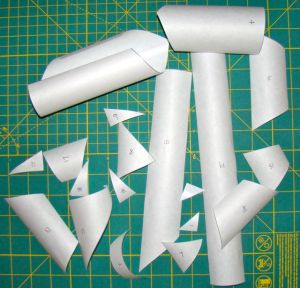
Freezer paper templates
So a rethink was in order. Why not use the templates to make the background in one piece, and appliqué the koala! Can still use the freezer paper templates to iron onto the fabric to get the right size background pieces and placement of the koala. Putting it back together again was like playing with a jigsaw puzzle.

Koala’s back together!
Do the same with the tree trunk.
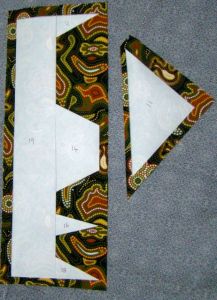
Koala tree trunk
Sew the backgrounds together, position and machine appliqué the koala with a zig-zag. Easy -peasy, glad I didn’t persist with 19 fiddly bits of fabric.

Appliqued koala.
Now for the face. Using Karen Kay Buckley’s circles and ovals to make the shapes (gave up on the vlisofix, it kept falling apart), and hand stitch to the block.

Karen Kay Buckley’s circles and ovals.
Oh no – those dinky bits of white for the eyes. Solution – use a permanent adhesive like ‘Heat n’ Bond’ that doesn’t need sewing, trim the edges of the block and the koala is done!

Koala block.
I wonder what Margaret Rolfe would think of the tools and techniques used to make this version of a block she planned 25 years ago.


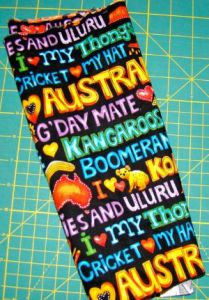
















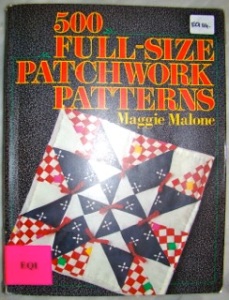

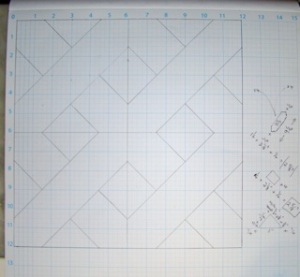


















You must be logged in to post a comment.